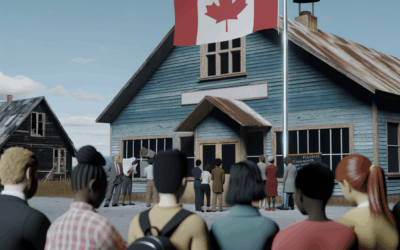Rural Population Decline in Canada: A Growing Concern
Canada, known for its vast landscapes and natural beauty, is facing a significant demographic shift as its rural population continues to decline. This trend, driven by a combination of economic, social, and environmental factors, has far-reaching implications for the country’s development, culture, and sustainability. Rural communities, once the backbone of Canada’s agricultural and resource-based economy, are now grappling with challenges such as aging populations, limited job opportunities, and reduced access to essential services. This article delves into the causes of rural population decline, its impact on local economies and infrastructure, and the potential solutions to revitalize these communities. By understanding the complexities of this issue, we can explore ways to ensure a balanced and prosperous future for both urban and rural Canada.
The Causes of Rural Population Decline
The decline in rural population is primarily attributed to several interconnected factors. Economic opportunities are a major driver, as many rural areas struggle to provide stable employment outside of traditional industries like agriculture and resource extraction. Younger generations often migrate to urban centers in search of better-paying jobs and career prospects. Additionally, aging populations in rural areas exacerbate the issue, as fewer young people remain to sustain these communities. Limited access to healthcare, education, and transportation further discourages families from settling in rural regions. Climate change and environmental challenges, such as droughts and wildfires, also play a role in displacing populations. These factors collectively contribute to the ongoing decline, creating a cycle that is difficult to break.
Economic Impact on Rural Communities
The economic consequences of population decline are profound. As people leave, local businesses face reduced demand for goods and services, leading to closures and job losses. This, in turn, creates a ripple effect, further diminishing the economic viability of the area. Agricultural and resource-based industries, which are critical to rural economies, often struggle to find skilled labor, impacting productivity and competitiveness. Additionally, declining populations result in lower tax revenues, making it challenging for local governments to maintain infrastructure and provide essential services. The economic stagnation in rural areas not only affects those who remain but also has broader implications for Canada’s overall economic health, as these regions play a vital role in the nation’s food security and resource supply.
Social and Cultural Implications
Beyond economics, rural population decline has significant social and cultural repercussions. Small towns and villages, which have long been centers of community and tradition, are losing their vibrancy as populations dwindle. Schools and community centers often close, leaving fewer opportunities for social interaction and cultural preservation. The loss of young people also means that traditional knowledge and practices, particularly in Indigenous communities, are at risk of being forgotten. Furthermore, the isolation experienced by those who remain can lead to mental health challenges, as access to support services is often limited. The erosion of rural communities not only impacts the individuals living there but also diminishes the cultural diversity that is a hallmark of Canadian society.
Infrastructure and Service Challenges
As populations decline, maintaining infrastructure and providing essential services becomes increasingly difficult. Roads, bridges, and public buildings often fall into disrepair due to limited funding and resources. Healthcare services are particularly affected, with many rural areas facing shortages of medical professionals and long travel distances to access care. Similarly, educational institutions struggle to remain open, forcing families to relocate or commute long distances for schooling. The lack of reliable internet and communication networks further isolates rural communities, hindering their ability to participate in the digital economy. These challenges create a cycle of decline, as inadequate infrastructure and services make rural areas less attractive to potential residents and businesses.
Potential Solutions and Revitalization Efforts
Addressing rural population decline requires a multifaceted approach. Governments at all levels must invest in infrastructure development and improve access to healthcare, education, and high-speed internet. Incentives for businesses to establish operations in rural areas can create job opportunities and stimulate economic growth. Supporting sustainable agriculture and resource management can also help rural industries thrive. Additionally, promoting rural tourism and cultural heritage can attract visitors and new residents. Community-led initiatives, such as co-operatives and local entrepreneurship programs, empower residents to take charge of their future. Collaboration between governments, private sectors, and communities is essential to create a sustainable and inclusive path forward for rural Canada.
Conclusion: A Call to Action for Rural Canada
The decline of rural populations in Canada is a complex issue with far-reaching consequences for the nation’s economy, culture, and social fabric. While the challenges are significant, they are not insurmountable. By addressing the root causes of population decline and implementing targeted solutions, it is possible to revitalize rural communities and ensure their long-term sustainability. Investments in infrastructure, economic diversification, and community empowerment are critical to reversing the trend. Moreover, fostering a sense of connection between urban and rural areas can help bridge the divide and promote mutual support. As Canada continues to evolve, it is essential to recognize the value of its rural regions and take proactive steps to preserve their vitality for future generations.



